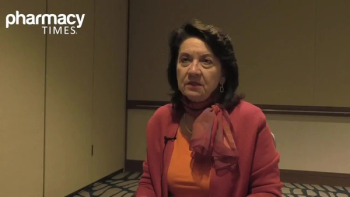
Pharmacy Practice in Focus: Oncology
- June 2021
- Volume 3
- Issue 3
New Developments for Gynecologic Cancers
Innovative treatment options and new screening guidelines are transforming diagnosis and management of the disease.
Approximately 89,000 women are diagnosed with gynecologic cancer in the United States annually.1 The CDC’s Inside Knowledge campaign raises awareness about 5 main types of gynecologic cancers: cervical, ovarian, vulvar, vaginal, and uterine.2
Evidence shows that cervical cancer screenings have declined during the COVID-19 pandemic, and the impact of this decline will be unknown until future studies are conducted.3 Furthermore, with new drug approvals for ovarian and endometrial cancer, innovative therapy options will transform the treatment landscape.
Pharmacists are a critical part of the interdisciplinary health care team that treats patients with gynecologic cancers, provides education on screenings, and navigates changes in therapy options.
Endometrial Cancer
Endometrial is the most common type of uterine cancer.2 The FDA granted accelerated approval on April 22, 2021, for the immunotherapy dostarlimab-gxly (Jemperli; GlaxoSmithKline) with an indication for treating recurrent or advanced endometrial cancer that has progressed on or following prior treatment with a platinum-containing chemotherapy, and for patients whose cancers have a specific genetic feature known as mismatch repair deficiency (dMMR) as determined by an approved test.4-6
Ventana MMR RxDx Panel is the first companion diagnostic to identify patients with endometrial cancer who are eligible for treatment with dostarlimab-gxly, and it provides pharmacists with an important role in pharmacogenomics and personalized medicine for oncology care.7 Approximately 25% to 30% of patients with advanced endo- metrial cancer have dMMR tumors, and with limited options available following treat- ment with a platinum-containing regimen, dostarlimab-gxly offers a therapy for an unmet need.4
Richard Pazdur, MD, director of the FDA’s Oncology Center of Excellence and acting director of the Office of Oncologic Diseases in the FDA’s Center for Drug Evaluation and Research, stated in a news release, “Today’s approval of [dostarlimab-gxly] is evidence of the FDA’s progress in applying precision medicine to expand treatment options for patients with cancer.”4
Accelerated approval was granted based on positive results from the ongoing GARNET study (NCT02715284), which have shown an overall response rate of 42%; the response lasted for at least 6 months in 93% of responders. Continued approval is contingent upon a confirmatory trial demonstrating clinical benefit.5 Dostarlimab-gxly is administered
as an intravenous infusion over 30 minutes with the dosing schedule as follows: 500 mg every 3 weeks for dose 1 through dose 4, and subsequent dosing starting 3 weeks after dose 4 (dose 5 onward) of 1000 mg every 6 weeks.6
Common adverse effects (AEs) include fatigue, nausea, diarrhea, anemia, and constipation.6 Immune- mediated AEs can affect various organ systems, causing inflammation in the lungs, colon, liver, endocrine glands, and kidneys. Patients who experience severe or life-threatening infusion-related reactions should stop taking dostarlimab-gxly.6 Additionally, individuals who are pregnant or breastfeeding should avoid dostarlimab-gxly because it can cause fetal harm and may result in serious AEs in newborns.6
Cervical Cancer
Pharmacists should continue to educate patients on the importance of cervical cancer screenings, especially as screenings have declined during the COVID-19 pandemic.3 The American Cancer Society issued updated screening guidelines in July 2020 for individuals at average risk of cervical cancer.8 The new guidelines recommend cervical cancer screening with a human papillomavirus (HPV) test alone every 5 years—past guidelines also recommended a Papanicolaou (Pap) test every 3 years—for patients aged 25 to 65 years with an intact cervix. Previously, the age for recommended screening was 21 years and older.8,9
If HPV testing alone is not available, then individuals can be screened with an HPV/Pap test every 5 years or a Pap test every 3 years. Evidence shows that HPV tests are more accurate and reliable than Pap tests.9 Therefore, HPV tests are more effective at ruling out disease and do not have to be repeated as frequently as Pap tests.9 Patients who received the HPV vaccine should still be screened for cervical cancer.9
Pharmacists should continue to recommend HPV vaccine as it can prevent cervical and other cancers. A recent CDC report revealed that HPV infections targeted by vaccine have decreased since the vaccination was introduced in 2014.10 Data through 2018 show a decline in HPV infections among females aged 14 to 19 years (88%) and 20 to 24 years (81%).10 In fact, the report shows evidence of indirect protection of unvaccinated females through herd effects in these age groups.10
Ovarian Cancer
On April 29, 2020, the FDA approved niraparib (Zejula; GlaxoSmithKline) as first-line maintenance treatment of advanced ovarian cancer, including adult patients with advanced epithelial ovarian, fallopian tube, or primary peritoneal cancer who are in a complete or partial response to first-line platinum-based chemotherapy.11,12 Approval was based on positive findings from the double-blind, placebo- controlled PRIMA trial (NCT02655016).11,13
Niraparib can be used in patients with or without mutations.13 The recommended dosage of niraparib for first-line maintenance treatment of advanced ovarian cancer is based on body weight and platelet count (Table).11,12 Additionally, patients should start treatment with niraparib no later than 12 weeks after their most recent platinum-containing regimen.12
The most common AEs patients experienced in the PRIMA trial included thrombocytopenia, anemia, nausea, fatigue, constipation, neutropenia, muscle pain, abdominal pain, vomiting, decreased appetite, leukopenia, headache, insomnia, dyspnea, dizziness, cough, hypertension, liver enzyme elevation, and acute liver injury.12,13
Jennifer Gershman, PharmD, CPh, is a drug information pharmacist and Pharmacy Times® contributor who resides in South Florida.
REFERENCES
- Gynecologic cancer awareness. CDC. Reviewed August 19, 2020. Accessed May 1, 2021.
https://www.cdc.gov/cancer/dcpc/resources/features/gynecologiccancers/ - Get the facts about gynecologic cancer. CDC. Revised April 2017. Accessed May 1, 2021.
https://www.cdc.gov/cancer/knowledge/pdf/cdc_gyn_comprehensive_brochure.pdf - Cancer facts & figures 2021. special section: COVID-19 and cancer. American Cancer Society. Accessed May 1, 2021.
https://www.cancer.org/content/dam/cancer-org/research/cancer-facts-and-statistics/annual-cancer-facts-and-figures/2021/special-section-covid19-and-cancer-2021.pdf - FDA approves immunotherapy for endometrial cancer with specific biomarker. News release. FDA; April 22, 2021. Accessed May 2, 2021.
https://www.fda.gov/news-events/press-announcements/fda-approves-immunotherapy-endometrial-cancer-specific-biomarker - FDA grants accelerated approval for GSK’s Jemperli (dostarlimab-gxly) for women with recurrent or advanced dMMR endometrial cancer. News release. GlaxoSmithKline; April 22, 2021. Accessed May 2, 2021.
https://www.gsk.com/en-gb/media/press-releases/fda-grants-accelerated-approval-for-gsk-s-jemperli-dostarlimab-gxly-for-women-with-recurrent-or-advanced-dmmr-endometrial-cancer/# - Jemperli. Prescribing information. GlaxoSmithKline; 2021. Accessed xxxx, 2021.
https://www.accessdata.fda.gov/drugsatfda_docs/label/2021/761174s000lbl.pdf - Roche receives FDA approval for first companion diagnostic to identify endometrial cancer patients eligible for immunotherapy. News release. Roche; April 23, 2021. Accessed May 2, 2021.
https://www.roche.com/media/releases/med-cor-2021-04-23.htm - Fontham ETH, Wolf AMD, Church TR, et al. Cervical cancer screening for individuals at average risk: 2020 guideline update from the American Cancer Society. CA Cancer J Clin. 2020;70(5):321-346. doi:10.3322/caac.21628
- NCI Staff. ACS’s updated cervical cancer screening guidelines explained. National Cancer Institute. September 18, 2020. Accessed May 3, 2021.
https://www.cancer.gov/news-events/cancer-currents-blog/2020/cervical-cancer-screening-hpv-test-guideline - Rosenblum HG, Lewis RM, Gargano JW, Querec TD, Unger ER, Markowitz LE. Declines in prevalence of human papillomavirus vaccine-type infection among females after introduction of vaccine – United States, 2003-2018. MMWR Morb Mortal Wkly Rep2021;70(12):415-420. doi:
10.15585/mmwr.mm7012a2 . Published correction appears in MMWR Morb Mortal Wkly Rep. 2021;70(13):502. - FDA approves niraparib as first-line maintenance of advanced ovarian cancer. FDA. April 29, 2020. Accessed May 3, 3021.
https://www.fda.gov/drugs/drug-approvals-and-databases/fda-approves-niraparib-first-line-maintenance-advanced-ovarian-cancer - Zejula. Prescribing information. GlaxoSmithKline; 2021. Accessed xxxxx, 2021.
https://www.accessdata.fda.gov/drugsatfda_docs/label/2021/208447s019s020lbl.pdf - González-Martin A, Pothuri B, Vergote I, et al; PRIMA/ENGOT-OV26/GOG-3012 Investigators. Niraparib in patients with newly diagnosed advanced ovarian cancer. N Engl J Med. 2019;381(25):2391-2402. doi: 10.1056/NEJMoa1910962
Articles in this issue
over 4 years ago
Brown Bag Consult®: Breast Cancer and Additional Stressorsover 4 years ago
What Pharmacists Should Know About Endometrial Cancerover 4 years ago
The Multiple Myeloma Treatment Pipeline and Specialty Pharmacyover 4 years ago
Pandemic Lessons: The Evolution of Pharmacy PracticeNewsletter
Stay informed on drug updates, treatment guidelines, and pharmacy practice trends—subscribe to Pharmacy Times for weekly clinical insights.




















































































































































































































